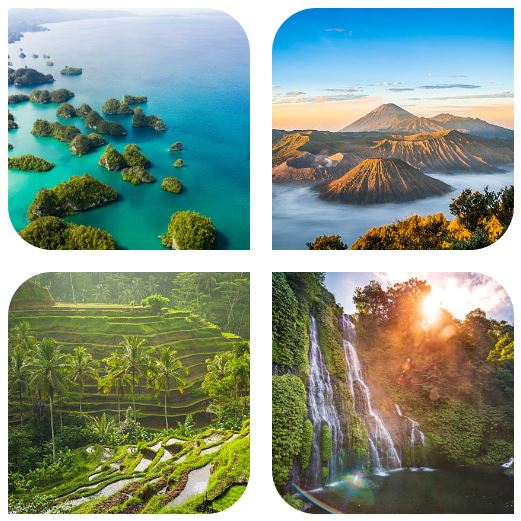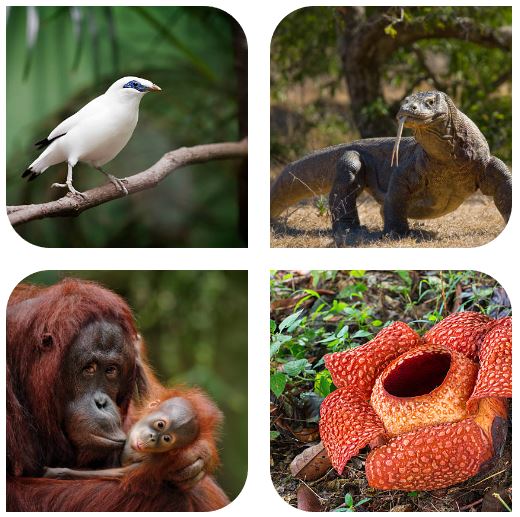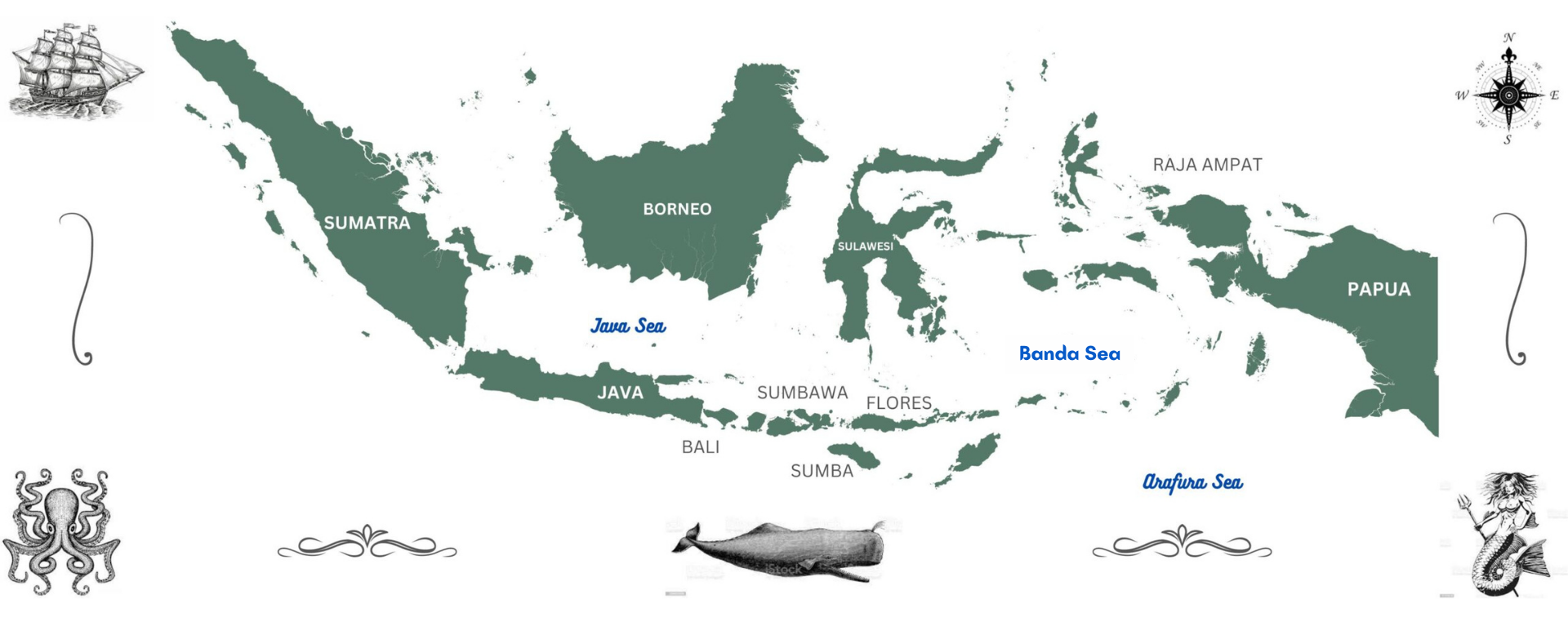Komodo Travel & Transportation (KTT) believes that quality leisure travel is one of life’s most treasured experiences—perfect for sharing with family, friends, and colleagues. While we specialize in custom travel and event experiences across Indonesia, we have also expanded our destinations to include Malaysia, offering the same level of personalized service. From foodie tours to cultural journeys and natural explorations, every itinerary is crafted with utmost care for your safety, comfort, and unique interests.

GEOGRAPHY
Indonesian constitutes the world’s largest archipelago, with a territory of some 7.9 million square kilometers, a land area of about 1.9 million square kilometers, and spanning roughly 5,120 km East to West at its widest, and 1,760 km North to South.
The country has between 17,000 and 18,000 islands, about 1/3 of which are inhabited, and home to about 147 volcanoes of which 76 are active. Mount Kerinci on Sumatra, at 3,805 m asl, is the highest volcano in Indonesia while Puncak Jaya on Papua, at 4884 m asl is the highest mountain. Lake Toba in Sumatra, at 1,130 km2, is the largest lake, while 590 m deep Lake Matano in Sulawesi, is the deepest.
The more well-known travel destinations include Bali, Flores, Java, Kalimantan-Borneo, Lombok, Papua, Raja Ampat, Sulawesi, Sumatra, Sumba and Sumbawa.
Indonesia’s diverse landscapes, biodiversity and cultures continue to evolve through the interplay of plate tectonics, geology, climate, and nature, including the machinations of one very busy species of primate.

BIODIVERSITY
Indonesia is among the most biodiverse of any country in the world, with over 25,000 species of flowering plants (including the giant Rafflesia and daunting Corpse Flower), 300++ species of spore bearing plants, 515+ species of mammals (including 55 species of primate), 1592+ species of bird, 781+ species of reptile, 270+ amphibians, 1200+ species of freshwater fish, 4900+ marine fish species (about 40% of all known species globally), over 17,000 species of marine invertebrates including 400+ species of corals (approx 75% of all corals known globally), and hundreds of thousands of species of insects (including Wallace’s Giant Bee and Queen Alexandra Bird Wing butterfly), and a vast host of tiny exotic others. Several hundreds of species of flora and fauna are considered “endemic” (found nowhere else).
Recogniti0n of the phenomenal beauty and significance of Indonesia’s biodiversity and ecosystems has driven the establishment of Indonesia has 566 protected areas (490 terrestrial and 76 marine), covering over 360,000 square kilometers.

HUMAN LANDSCAPE
As diverse as the country’s flora and fauna, so too is Indonesia’s cultural landscape and long, human history. The country has been home to modern humans (Homo sapiens) and our near relatives, Homo erectus and Homo floriensis, for over 1.5 million years. The 2003 discovery on West Flores of Homo floriensis fossils dating some 60,000 – 100,000 years ago, suggests a fairly recent arrival of this diminutive relative and much speculation as to their sympatry (creatures who overlap in time and space) with “us”. Megalithic traditions originating thousands of years ago in Indonesia are still part of cultural life in a number of locations including Sulawesis, Flores, Java, Sumba, and Nias Islands.
The archipelago is now home to over 367 million hominids at an approximate density of 145/km2 (13th highest in the world), divided among 1,340 recognised ethnic groups, and speaking an ever-diminishing number of some 720 languages. The Mongol language could have been among them had it not been for the Kubla Khan’s (Genghis Khans grandson) 1292 defeat by the Javanese. The brief efforts by the Mongols to conquer Indonesia, are but one of a vast number of internal and external power and resource conflicts the country and its inhabitants have participated in and endured over its long and turbulent history, a fact in no small part influenced by its unique biogeography.
The global demand for spice, alone fueled hundreds of years of economic and social “engagement”, involving Asian traders, the Portuguese starting in the 1500’s, and Dutch through to the end of the second world war when the country achieved independence.
Though about 90% of Indonesian’s identify as Muslim, practitioners and religious sites of other spiritual belief systems can also be found in various pockets of the country. These include Hinduism, Buddhism, Christianity, Confucianism, along with Indigenous ancestral animistic/polytheistic religions, and syncretic versions thereof. Indonesia’s human legacy is embodied in the diversity of ethnic groups, languages, ceremonies, arts, architecture, a vast array of historic and pre-historic sites, as well as in the tremendous vibrancy of the larger cities. bursting with the fusion of the local, global and technological influences. Recognition of this great wealth of diversity has resulted in Indonesia being home to 9 UNESCO World Heritage sites, and 14 World Biosphere Reserves.
Ask us to design, curate and deliver a first class, unforgettable Indonesian Experience
Photo courtesy and copyright of Rob Collins

